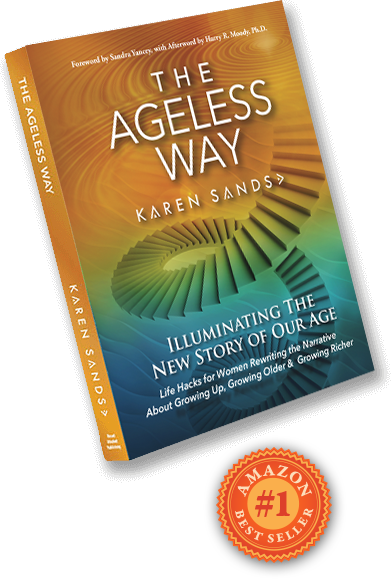 I’ve talked before about why it’s a mistake to wait for the economy to recover before we transform our lives, work, and world. The future belongs to those who are starting those transformations now, who are shaping the world and creating their own place in it.
I’ve talked before about why it’s a mistake to wait for the economy to recover before we transform our lives, work, and world. The future belongs to those who are starting those transformations now, who are shaping the world and creating their own place in it.
If you can’t afford to make a huge leap now—starting your own business, changing or reinventing your career, transforming your organization—you can, and should, start doing the legwork now so that when the opportunity presents itself, you’ll be on firm footing to make that leap with confidence, without hesitation.
I’ve talked about some of what this legwork involves in other posts (such as here, here, here, here, etc.). Today, I want to focus on how staying on top of trends can help you lead change with your ideas, instead of being swept along by it uncontrollably.
The trends you analyze will depend somewhat on your personal and professional interests, experiences, goals, and vision. For most of us, however, having an idea of where the world of work is likely to go is crucial to creating a future that integrates what matters most to us, how we want to spend our time, with what the world wants and needs. In other words, knowing something about the likely future of work will help us to create a future that works—for all of us.
For example, consider these trends:
- The U.S. Department of Labor estimates that the number of information-technology jobs is expected to grow at more than twice the overall job-growth rate. These jobs include knowledge work, an area that has been growing explosively for years now, including jobs related to software, problem-solving and strategy, communications and networks, and various careers in math and science.
- Health care and education are expected to continue being reliable areas of job growth, especially as the large generation of boomers continues to age.
- The business world is finally realizing that it can save money by promoting work-life balance, flexible work arrangements, and collaborative business models. For example, telecommuting can save businesses real estate and payroll costs. Reduced hours, unpaid sabbaticals, lateral employee movements (such as from one department to another) without any of these sidelining employee career growth are more cost-effective than laying off employees and having to start from scratch once the economy improves.
- Boomers and succeeding generations will be working past retirement age, at least nine years according to T. Rowe Price, some for financial reasons and others because they simply have no desire to retire. The more flexible arrangements mentioned above will come into play here, such as more job sharing, even at senior levels, as well as more boomers filling the need for knowledge workers as strategists, consultants, and coaches—not to mention as entrepreneurs.
- Companies will be hiring more and more women in all positions, including senior management. As I’ve discussed in other posts (e.g., “How Being Successful Can Save the Planet”), women executives and board members tend to lead to higher returns, and the cost-saving measures described above have their roots in the collaborative management style and emphasis on work-life balance introduced in many businesses by female leadership. The coming gap between college graduates and the need for college-educated workers will be filled primarily by women, who earn more college and advanced degrees than men do.
- Women already control 85% of consumer spending in the U.S. They are the present and future market for businesses worldwide. Boomer women in particular have spending clout. Business who ignore this market and continue to portray all women as being or wanting to be young and thin do so at significant risk of losing a huge market share.
- Boomers in general are choosing to spend their money based on their values, such as purchasing from green companies. (“Can’t Buy Me Love”)
Whatever your vision for the future, these trends can help you determine the shape of it. As an entrepreneur, consider what these facts and probable events tell you about what you have to offer, what your audience needs and wants, your options for hiring and outsourcing, and how you can create a business model that combines purpose and profit for sustainable success that also makes a difference in the world.
As a leader in your organization, you have the opportunity to create win-win situations for the company and the people you lead by being among the first to make changes that lead to more profit, happier and more productive employees, and improved products and services for the market of the future.
As a professional looking to change careers or to transform how you work—because you are approaching retirement age or wanting to devote more time and energy to what really matters—these trends can show you many alternative paths and their relative risks and benefits as well as spark your own reimagining of your personal and professional life.
Don’t be afraid to think outside the statistical box, either. Sure, you could look at the aging boomer population and think about the need for more senior living communities and nursing homes, or you could look at what this community needs and wants and strike out in a novel direction that offers an alternative to these kinds of places or that recognizes how this generation is likely to turn stereotypes about aging on their head. For example, there is an emerging interest in creating communal intergenerational living situations based on shared values rather than grouping elders together regardless of whether they have anything in common besides their age.
Of course, looking at trends is only one small part of an overall strategy for reinventing your future. But this is an action you can start taking today, even if you feel trapped in your current situation by the effects of the Great Recession. You may not feel in control of your present, but your future is entirely in your hands.
In what areas do you need to monitor and evaluate trends?







Karen, This is great information on trends. I appreciate the hard facts about what the future is holding in the economy and where opportunities exist, on balance with the notion that you can also create based on what you believe is needed and what you are passionate about. Choosing only in one extreme without the other might not work, but a blend of the both, hedges your bets. As always, thanks for an insightful post!!
So appreciate how clearly you reflected what I intended. Yes everything is about both/and vs. either/or.
Karen, I loved your blog. I found it very informative. Much of it was information that I was totally unaware of. Thank you for educating me. Now, I know that I should stay more aware ad up to date on these topics and I thank you for teaching me that. I will surely be back!! Nikki Hodson
So glad you stopped by and I welcome your returning often! Whatever comes up pls. share your ahas! Your are most welcome.
I agree! Our future is completely in our hands – no matter what any forecast says.